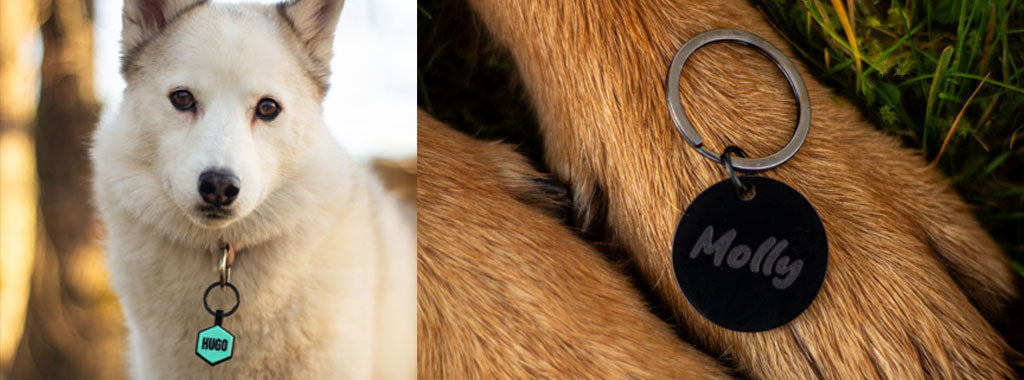
How to choose the perfect name tag for your dog. Materials, design and function
Share
Choosing the right dog tag for your dog may seem like a simple task, but there are several factors to consider to ensure you choose the best one possible. Material, design, and function are all important aspects that affect both durability and comfort. In this article, we’ll go over how to choose the perfect dog tag and why silicone is the best option for your four-legged friend.
1. Material Choice: Why Silicone is Best
The material of a name tag is crucial to its durability, comfort, and function. Here are some of the most common materials, and why silicone stands out as the best choice:
- Stainless steel: This material is very durable and corrosion-resistant, but can be heavy and uncomfortable for smaller dogs. It can also cause chafing on the dog's fur or skin.
- Aluminum: Lighter than steel, aluminum trays can scratch quickly and the text can wear off over time. It is also less durable and can bend under heavy use.
- Plastic: Plastic tags are lightweight and inexpensive, but they are often less durable and can crack or break under stress. The text can also fade in the sun.
- Brass: A classic material that gives a nice finish, but it is heavier and can oxidize over time, causing it to lose its appearance.
- Silicone: Silicone is lightweight, soft and flexible, making it comfortable for dogs of all sizes. It is also extremely durable, water-resistant and scratch-resistant. In addition, silicone is hypoallergenic, minimizing the risk of irritation to your dog's skin.
2. Design: Style and visibility
The design of the name tag also plays an important role. Here are some things to consider:
- Size and shape: The name tag should be large enough to contain all the necessary information, but not so large that it is uncomfortable for the dog. Silicone tags come in a variety of shapes and sizes, making it easy to find one that is right for your dog.
- Color and contrast: Silicone tags are available in many colors, making them easy to customize to your dog's personality. A light color with dark contrasting text makes the information easy to read.
- Engraving: The text on a name tag should be clear and durable. Silicone can be easily embossed or engraved with long-lasting, clear text that does not wear off as easily as other materials.
3. Function: Safety and comfort
The function of a name tag extends beyond its basic purpose of carrying information. Here are some aspects that make silicone the best choice:
- Noiseproof: Unlike metal trays, which can rattle and make noise when the dog moves, silicone is silent. This is especially appreciated by both dogs and owners who are bothered by the sound of rattling trays.
- Water resistance: Silicone is completely waterproof and does not rust, making it perfect for dogs that love to swim or stay in humid environments.
- Flexibility and comfort: Silicone is soft and flexible, which means it won't cause discomfort to your dog. It's also less likely to get caught on things or rub against your dog's collar.
- Secure attachment: Silicone tags can be easily attached to your dog's collar without the risk of coming loose. They can also have integrated loops or elastic fasteners that keep them securely in place.
4. Customization: Make the name tag unique
Silicone offers great possibilities for personalization. You can choose from different colors, shapes, and even add patterns or symbols that reflect your dog's unique personality. With silicone, you not only get a durable and functional name tag, but also an accessory that is tailor-made for your dog.
Conclusion
When it comes to choosing the perfect dog tag, silicone is a superior option due to its durability, comfort, and customization options. It is a quiet, safe, and convenient choice that gives you and your dog the peace of mind of always being easily identifiable, no matter where you are. Invest in a silicone tag to give your dog the best in both safety and style.
